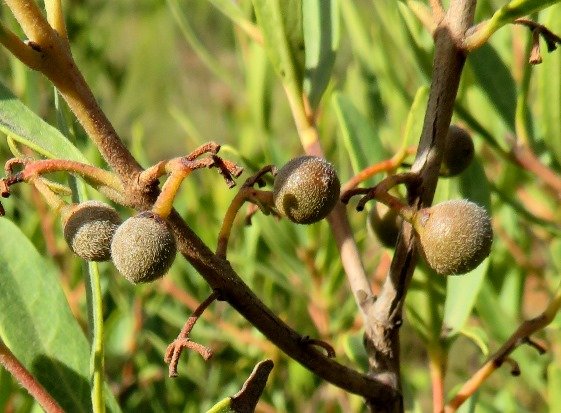Euclea crispa subsp. crispa stubbly young fruit

Author: Ivan Lätti
Photographer: Thabo Maphisa
These hairy fruits were seen on a Euclea crispa subsp. crispa tree in the Kouga in the Eastern Cape during May. The globose, single-seeded fruits, now still a brownish green, will turn red-brown or brown as they ripen to black or almost black.
Antelopes, rats and mongooses will help birds to eat the fruit and disperse their seeds, never realising how useful they are in this regard. Even the self-interest involved in securing a food supply for their descendants is involuntary.
The fleshy, yellow pedicels sustaining the supply route of the fruits as long as needed, afterwards soon dry out to thin and brown relics but persist for a while. The calyx at the back of each fruit is small and inconspicuous, as is the mark where the style was attached on top, only showing as a small bulge like a bellybutton (Vlok and Schutte-Vlok, 2015; Coates Palgrave, 2002; Pooley, 1993; iNaturalist).

